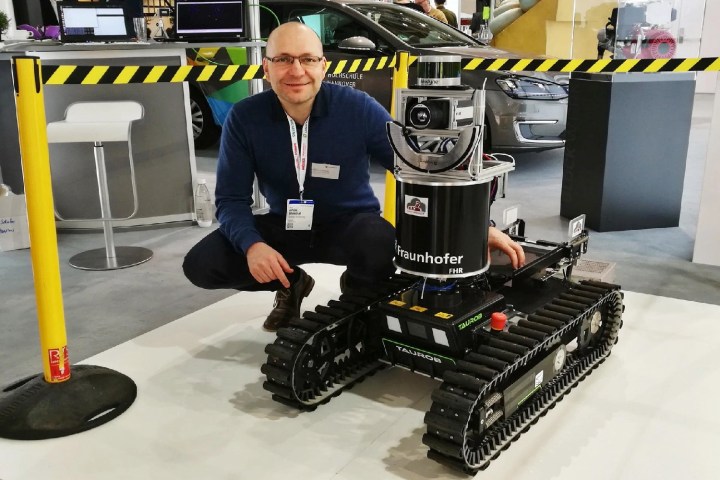
Along with dirty and dull work, robots are also ideal for dangerous tasks, where it’s preferable to risk a machine than send in humans. Chief among these? Entering smoke-filled buildings where a fire has broken out to aid with rescue operations. Previously, we’ve written about two humanoid robots designed to carry out this task, including a robot built by the U.S. Navy and one developed by researchers in Italy. Now there’s a new entry on the scene — and it could help save lives.
Called SmokeBot, it’s a smaller robot than its rivals, although one that could nonetheless be extremely useful in an emergency situation like a house fire or indoor gas leak. SmokeBot is able to see and navigate in smoky areas while plotting maps of its surroundings for assisting fire services or search-and-rescue teams. To do this, it uses a combination of gas sensors, radar, a laser scanner, and a thermal camera. A similar robot is already being used by rescue services in Vienna, but it is only equipped with a robot arm and regular camera.
“We target robots operating in low-visibility environments, a scenario where robots could be very helpful, but in which it was not possible to use them prior to SmokeBot,” Achim Lilienthal, project coordinator and professor of Computer Science at Sweden’s Örebro University, told Digital Trends. “To enable using robots in low-visibility scenarios — with a lot of smoke or dust, for example — we developed novel sensors and perception and cognitive approaches tailored to those sensors.”
With a view toward its possible firefighting applications, the team built their prototype to incorporate an active heat shield, along with the ability to autonomously find areas with a WiFi connection. If it loses connection with the team controlling it via remote control, SmokeBot can navigate back to whichever point it last had good internet reception.
While such a robot would probably be too slow-moving to assist in the most critical and urgent of rescue missions, it could nonetheless be a useful tool for firefighting. The team also plans to incorporate similar technology into future drones, although Lilienthal noted that, at present, “the sensors are currently too heavy for drones.” Further development could allow this research to additionally be applied to lightweight flying robots to help them function in low-visibility scenarios.
Editors' Recommendations
- The squishy Sensiworm robot goes places other robots can’t
- CyberOne robot is Xiaomi’s answer to Tesla Bot
- These robot vacuums have built-in cameras. Here’s what they can do
- New ‘shady’ research from MIT uses shadows to see what cameras can’t
- Republicans tried to bring phones into the SCIF room. Here’s why they can’t


